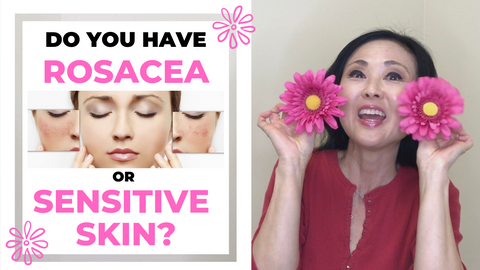Dry Hands from Hand Sanitizer PRO TIPS: Dry hands from hand sanitizers is fairly common if you are over using hand sanitizers, over washing your hands or BOTH.
During this COVID-19 pandemic, more people are using hand sanitizers and washing their hands more than ever which can then lead to dry, itchy, red, cracked, hands. Some will even develop atopic dermatitis.
Please refer to Part 1 of this:
Your Hand Sanitizer is NOT working because: 5 MYTHS vs TRUTH
For most people, they will have extremely dry hands from using hand sanitizers or over washing their hands for a season. As a professional who was constantly is washing my hands because touching clients skin was a part of my job, I have learned some tips that can:
- Keep dry skin from developing.
- Heal your skin faster from hand sanitizers or over washing of hands.
This depends on what state your hands are in when you receive these PRO TIPS.
Dry Hands from Hand Sanitizer- PRO TIP #1:
CDC (Center for Disease Control) recommends washing with water temperature of at least 77 f /25c or above. This is because heat melts the lipid that surrounds the virus ,then protein molecule begins to break down on its own. Some people will use very hot water consistently to wash their hands, believing that the hotter the water, the more effective it will be to kill the virus.
This is somewhat true. Heat melts fat. However, it doesn’t need to be extremely hot water. Hot water will not only melt the lipid barrier surrounding the virus but it ALSO will deplete your skins natural lipid barrier as well.
PRO TIP #2:
Switch from using a regular hand soap/antibacterial soap to using one made specifically made for sensitive skin AND one that uses plant based surfactants instead of sulphates for foaming agents.
Conventional soaps that are common at the drug store such as Wal Mart, Target, etc contain inexpensive hand soap that are basically made up of water, sulphates (detergent agents) fragrance, emulsifiers and preservatives.
Cumulatively over time, they can over strip the natural oils and moisture barrier from your skin.
Instead, opt for more gentle formulations that use alternative foaming agents such as:
-Decyl Glucoside
-Cocoglucoside
-Glucoside
Some of these are coconut, sugar, and/or starch based surfactants.
FOAM IS IMPORTANT. According to the Johns Hopkins Coronavirus Resource Center website, the foam is what also helps dissolve the lipid barrier around the virus. This is also why it is important to wash for 20 seconds, to create a lot of foam.
These plant based surfactants are usually low foaming agents compared to the traditional surfactants so it is important to create a lot of foam by rubbing your hands together vigorously.
I found 3 that were sulphate free, and also contained some anti inflammatory ingredients (since most people who have extremely dry hands start to experience some form of irritation) . Some may have fragrance free options.
Here are a few examples:
Puracy Natural Hand soap and lotion set
PRO TIP #3
Dry hands from hand sanitizers can ALSO be from over drying your hands. The alcohol from the hand sanitizer will evaporate along with moisture from your hands so AVOID completely drying your hands off. Leave them slightly moist THEN apply hand cream or lotion. The humectants in the hand lotion/cream will bind this with your skin.
***If you find that you keep applying hand lotion/cream and your hands are STILL DRY and you KEEP REAPPLYING hand lotion, you may be using a product that is using a higher percentage of OCCLUSIVE ingredients than humectants.
***LOOK AT YOUR INGREDIENTS IN YOUR HAND LOTION***
If your hand lotion/cream has silicones such as dimethicone, trimethicone, cyclopentasiloxane, these do NOT ADD MOISTURE to the skin but helps keep the moisture from evaporating off the skin.
Examples of these products that may have more occlusive agents than humectants
Aveeno
Nivea
Cetaphil
Aveeno Skin Relief Intense Moisture Cream 24 Hour Moisture may not be suitable for some sensitive skin types.
Distearyldimonium Chloride can be an irritant to sensitive skin
Isopropyl Palmitate and Petrolatum-fourth and fifth ingredient respectively (as of this writing) . They are occlusive agents. These are known to be highly comedogenic for some skin types so don’t apply this to your face if you are break out prone.
This product is not high in humectants but more in occlusive agents.
If you don’t know what the different between humectants, emollients and occlusives are, please watch:
Best Moisturizers for DRY SKIN
How to Treat Dry and Dehydrated Skin: Do this ONE THING
These products use more occlusive agents than humectants but instead of using silicones, they use natural oils or waxes such as:
Burts Bees Shea Butter Repair Cream
Adamia Hand Cream
***These are NOT bad products***. They just may not hydrate your skin IF your skin is lacking moisture.
Burts Bees lists sunflower oil and beeswax (both occlusives) BEFORE glycerin (humectant) followed by 7 different oils so this product would be MORE beneficial for someone who has lipid poor skin.
Adamia is also mostly made up of emollients and occlusives.
One way to know if your skin needs more humectants than occlusive agents is that if you are using a similar type of product and your hands feel like they are STILL dry after continuously applying lotion, this may mean you need to change your product in finding something that has a humectant listed higher than an occlusive agent.
Here are some examples that I personally use and has helped me throughout the years of continuously washing my hands during services:
Yu-Be Pure Hydration Fragrance Free hand Cream
-paraben/fragrance/silicone/petroleum free
The uniqueness of this product is that most products will list water as the first ingredient. This product lists a humectant as the first ingredient. It lists glycerin BEFORE the water.
Isopropyl Myristate: restores moisture barrier and strengthen skins moisture barrier.
***If break out prone, do NOT use this on face.
Hydrogenated coco-glycerides-emollient thickening agent derived from coconut.
California Baby–lists water, then calendula (natural anti inflammatory agent), the next ingredient is caprylic triglyceride which is a combination of glycerin and coconut oil so it is balanced serving as a humectant, emollient and occlusive agent.
I did try to find inexpensive creams that:
-didn’t have sensitizing agents
-had a good balance of humectants/emollients/occlusive agents
-silicone/paraben/petroleum free
-was $10.00 or under
It was extremely difficult to find one so if YOU know of one that fits ALL 3 of these AND under $10.00, please let us know in the comments.
Remember, Make Up is an ART
and Skin Care is a SCIENCE
Sources:
https://www.hopkinsmedicine.org/heic/infection_surveillance/hand_hygiene.html
Follow us:
Follow us for more reviews @:
YouTube Channel:https://www.youtube.com/channel/UC4XGWX6eheTisHo8UBsdOWA
Instagram:@GoSeeChristy
Facebook:https://www.facebook.com/goseeChristyBeautyBoutique/
Twitter:https://twitter.com/goseechristy
Pinterest:https://www.pinterest.com/goseechristy/



